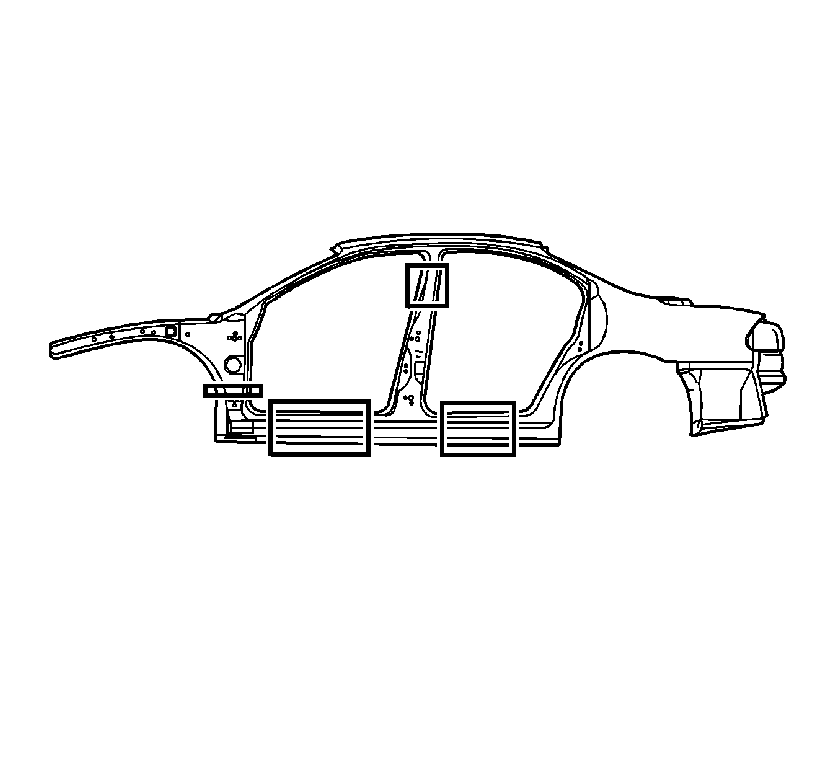For 1990-2009 cars only
Removal Procedure
- Disable the SIR system. Refer to SIR Disabling and Enabling in SIR.
- Disconnect the negative battery cable. Refer to Battery Negative Cable Disconnection and Connection in Engine Electrical.
- Remove all related panels and components.
- Repair as much of the damage as possible to factory specifications. Refer to Dimensions - Body .
- Note the location and remove the sealers and anti-corrosion materials from the repair area, as necessary. Refer to Anti-Corrosion Treatment and Repair in Paint/Coatings.
- Remove the radiator support. Refer to Radiator Support Replacement .
- Cut the panel in the areas where the sectioning is to take place. Sectioning should be performed in recommended areas only.
- Locate, mark and drill out all factory welds. Note the number and location of welds for installation of the service assembly.
- Remove the damaged outer door frame opening.
Caution: Refer to Approved Equipment for Collision Repair Caution in the Preface section.

Caution: Refer to Foam Sound Deadeners Caution in the Preface section.
Important: Use care not to cut the inner reinforcement when cutting the outer door frame.
Installation Procedure
- On service part, mark a horizontal line to leave a gap of one and one-half times the thickness of the metal at the sectioning joint (2).
- Cut the outer door frame opening service part along this line.
- Cut a 100 mm (94 in) piece from the unused portion of the service part for a backing plate (1).
- Remove the flange on each side of the backing plate so that it will fit behind the sectioning joint.
- Drill 8 mm (5/16 in) holes for plug welding in the service part in the locations noted from the original panel.
- Drill holes for plug welding along the sectioning cuts on both the service part and the original panel.
- Locate 3 holes approximately 25 mm (1 in) from the edge of the sectioning cuts.
- Prepare all mating surfaces as necessary.
- Apply 3M® Weld-Thru coating P/N 05916 or equivalent to all mating surfaces.
- Position the service part to overlap the exposed 50 mm (2 in) of the backing plate.
- Inspect for proper fit. Use 3-dimensional measuring equipment.
- Plug weld accordingly.
- Stitch weld along the sectioning joint.
- Make 25-mm (1-in) welds along the seam with 25 mm (1 in) gaps between.
- Go back and complete the stitch weld. This will create a solid joint with minimal heat distortion.
- Complete all other welds and sectioning procedures as necessary.
- Clean and prepare welded surfaces.
- Apply the sealers and anti-corrosion materials to the repair area, as necessary. Refer to Anti-Corrosion Treatment and Repair in Paint/Coatings.
- Paint the repair area. Refer to Basecoat/Clearcoat Paint Systems in Paint/Coatings.
- Install all related panels and components.
- Connect the negative battery cable. Refer to Battery Negative Cable Disconnection and Connection in Engine Electrical.
- Enable the SIR system. Refer to SIR Disabling and Enabling in SIR.

Important: When sectioning the outer door frame at the lower front hinge pillar or at the center lock pillar, the inner reinforcement panel can be used as a backing plate.
